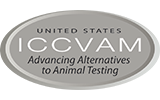Integration of Transcriptome Analysis with Pathophysiological Endpoints to Evaluate Cigarette Smoke Toxicity in an In Vitro Human Airway Tissue Model
To assess the effects of cigarette smoke on the function and phenotype of airway epithelial cells, scientists at the FDA Center for Tobacco Products and the FDA National Center for Toxicological Research developed a novel repeated-treatment protocol to evaluate the progression of molecular, functional, and structural abnormalities induced by cigarette smoke in a human in vitro air–liquid-interface airway tissue model (Xiong et al. 2021a). Transcriptomics analysis was combined with in vitro measurements to demonstrate cigarette smoke-mediated effects on a variety of cell functions. These measurements revealed effects that were highly consistent with abnormalities observed in airways of smokers. Enrichment analysis on the transcriptomic profiles of the air–liquid-interface cultures revealed key molecular pathways, such as xenobiotic metabolism, oxidative stress, and inflammatory responses, that were perturbed in response to cigarette smoke exposure. A subsequent study (Xiong et al. 2021b) described the transcriptome analyses of these cultures and noted that cultures exposed to the high concentration of cigarette smoke exhibited 5,090 differentially expressed genes and 551 differentially expressed microRNAs. Expression of genes involved in ciliary development and function were significantly perturbed by repeated cigarette smoke exposures, leading to changes in protein content and cilia beating frequency. In particular, the expression of miR-449a, a conserved miRNA highly enriched in ciliated airway epithelia and implicated in motile ciliogenesis, showed a time-dependent decrease following cigarette smoke, an effect consistent with observations reported in smokers with chronic obstructive pulmonary disease. Investigating the effects of cigarette smoke on the transcriptome profile of human air–liquid-interface cultures may provide both mechanistic insights and potential early biomarkers for harm from cigarette smoke exposure.



